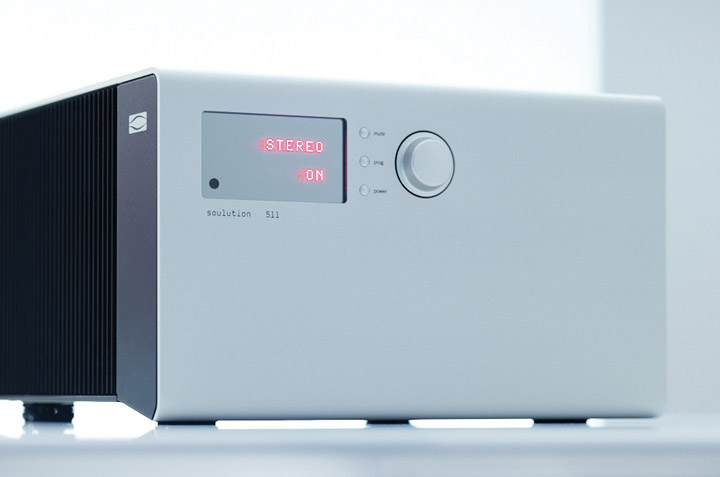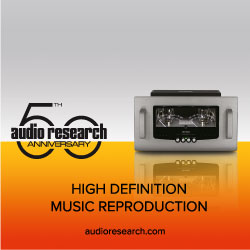
A semi-profound simile used in 2-channel audiophile reviewer circles posits: “Writing about music is like dancing about architecture.” Said another way, English is a lousy language for describing how things sound. So how exactly do audio critics “describe” stereo sound? This article will provide some insight into the various sonic qualities that audiophiles want to hear from stereo systems and the various terms that audio reviewers use to describe sonic characteristics.
The frequency spectrum of human hearing covers low bass notes from 20 Hertz up to the highest audible frequencies around 20,000 Hertz (i.e. 20Hz to 20KHz). Audiophiles divide this spectrum into three ranges: 1) treble sounds or highs; 2) midrange sounds; and 3) low frequency sounds within the bass registers.
Treble:
Instruments that produce high frequency sounds like cymbals or violins are referred to by audiophiles with the term “treble”. To audio critics, poorly reproduced sound in the higher registers is loathed more than root canal surgery being done by a nervous dentist with shakier hands than an epileptic in a San Andreas fencing competition.
In general, audio reviewers are like the seven dwarfs: six of them are never Happy. If a stereo system has bright, tinny, hard, brittle, or grainy sound, the result will always be a fatiguing sound that’s more painful to listen to than Hilary Clinton after she’s inhaled copious amounts of helium.
Stated succinctly, bad treble equals bad sound. If your stereo system makes a splash of cymbals sound like a 1977 Cadillac DeVille crashing through a half-dozen aluminium trash cans at 60 Mph, odds are, you’ve got issues within the high frequency registers.
A lot of different things can cause poor treble in stereo systems. Lousy tweeters, cheap cabling, shoddy digital components, starving / polluted A/C power supplies, and overly reflective room acoustics can all result in a myriad of fatiguing noise up in the highs. Overall, 2-channel music reproduction systems seek to create natural high frequency sounds with air, openness, extension, and space; just as real instruments do.
The Midrange and Lower Midrange:
Sounds within the midrange roughly measure between 800Hz and 3,000Hz. Human hearing is extraordinarily sensitive to noises within this frequency range. The sounds we hear each and every day such as human voices, other animals, and rustling leaves on trees all occur within the mid-band.
The midrange is where music lives. Human hearing is FAR more sensitive to sonic anomalies within the mid-band than in the bass or treble registers. Male and female vocals in the midrange are particularly revealing of how musical and accurate a stereo is. If your favourite singer sounds like Kermit the frog with a sinus infection after a month-long weed bender, it’s a safe bet that your audio system isn’t accurately reproducing male and/or female voices.
Midrange distortions sound like someone’s cupping their hands over their mouth while they’re singing or speaking. If your loudspeakers fail to correctly reproduce recorded vocals, they’ll stick out as prominently and annoyingly as a rally to make smoking legal again inside coffee shops and shopping malls.
Audio critics use pejorative words like honking, congested, nasal, thick, phlegm-coated, and boxed in to describe lousy midrange sonics. When you buy $100 ‘marine grade’ speakers from K-Mart and wire them up with a Walmart lamp cord, you’ll hear all of these sonic discolorations. If vocals sound monotonous, tired, or colored, a speaker probably has unnatural peaks and dips within the mid-band.
Midrange drivers are especially prone to amplifying unchecked cabinet vibrations. Solo piano recordings are quite useful for revealing cabinet resonances. If the cabinetry in your speakers is more flexible than Oprah’s yoga stretch pants, you’ll be losing sound quality in the midrange faster than Donald Trump is throwing immigrants out of the US.

Upper Bass, Mid-Bass, and Low Bass:
The word “bass” is often associated with the sternum belting volume levels that urban youth so vaingloriously delight in hearing out of their jacked-up import car stereos. To audio critics, the one note homogenized sound of excessively boomy bass cranked up so freakin’ loud that it can stun a badger at 20 paces is decidedly NOT what we want to hear from any stereo system.
Bass shouldn’t sound like a freshly cut air-biscuit echoing around the inside of a porta-potty. Most of the music I listen to needs a copious amount of high quality low end to sound realistic. Audiophiles like to hear bass that’s full, round, taut, muscular, incisive, correctly weighted, and tangible. The lower registers should be driven by rhythm, tone, texture, and *feel*; not deafening volume levels.
Audiophiles divide bass frequencies into 3 ranges: upper bass, mid bass, and lower bass. Audio critics want to hear all of the wondrous instruments within these lower frequency ranges reproduced with correct PRaT (Pace, Rhythm, and Timing), timbral accuracy, texture, weight, and a palpable *feel* that moves the soul.
The rhythm of music lives in the lows. Orchestral and symphonic music needs the impact, presence, and slam of articulate bass. The swing and groove of jazz needs eloquent and textured bass. The jungle-boogie rhythms of Latin, Caribbean, and Brazilian music must have good bass. The rampaging thunder, galloping rhythms, and explosive energy of speed metal, doom metal, NWoBHM rock, space rock, stoner rock, and black metal all need bass that’s textured, articulate, and layered.
Good bass should move a listener’s soul to wanna get up off of her couch, shake her God-given booty, and deliriously swing her hips around the room like a panda bear on roller skates on an 5-day caffeine-fuelled freak-out.
On the one hand, too much bass that overwhelms the midrange and highs is no good. An excess of bass is described by critics as being boomy, muddy, bloated, congested, loose, slow, and fat. On the other paw, too little extension, weight, texture, and/or presence in the low end is just as bad. Audio reviewers describe a lack of bass as sounding lean, thin, threadbare, over-damped, and/or lacking extension.
Getting the PRaT, dynamics, groove, and energy in the lower registers to sound like live music requires decent speed and articulation. If the bass is slower than a snail and lags behind the midrange and treble, all forms of music will lack rhythm and musical substance.

















